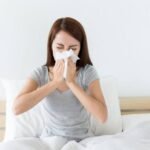Living in Manhattan’s bustling environment, you might not realize that the air circulating through your apartment could be more polluted than the street outside. House Cleaning Fleet recently discovered that 89% of NYC apartments have never had their air ducts professionally cleaned, creating a silent health crisis in homes across all five boroughs.
Your HVAC system works overtime in New York’s extreme weather conditions, pulling in everything from construction dust near Hudson Yards to pollen from Central Park. Without proper maintenance, your air ducts become breeding grounds for mold, bacteria, and allergens that affect your family’s health daily.
The Shocking Reality of NYC Indoor Air Quality
New York City residents face unique air quality challenges that most cleaning guides ignore. The urban environment creates a perfect storm of pollutants that settle into your ventilation system year after year.
Between the constant construction projects in neighborhoods like Long Island City and the heavy traffic around Times Square, your air ducts collect microscopic particles that standard vacuum cleaners never reach. These contaminants include:
Construction debris and cement dust that drifts through windows in developing areas like DUMBO and Williamsburg. Vehicle emissions that seep into buildings along major thoroughfares like the FDR Drive and West Side Highway. Organic matter from nearby parks and green spaces that decompose inside ductwork. Restaurant exhaust and cooking oils from the thousands of commercial kitchens operating in close proximity to residential buildings.
The problem intensifies during winter months when heating systems run constantly, circulating these pollutants throughout your living space. Spring brings additional challenges as pollen from Prospect Park, Central Park, and smaller green spaces gets drawn into ventilation systems across Brooklyn Heights, Upper West Side, and throughout Manhattan.
How Dirty Air Ducts Destroy Your Health Without Warning
Dr. Sarah Martinez, an environmental health specialist at Mount Sinai Hospital, explains that contaminated air ducts create symptoms that residents often mistake for seasonal allergies or stress-related issues. The reality is more serious than most New Yorkers understand.
Respiratory problems develop gradually as you breathe contaminated air for months or years. Morning congestion becomes your new normal. Afternoon headaches seem like part of city life. Evening fatigue feels expected after long days in the urban environment.
Children are particularly vulnerable to poor indoor air quality. Their developing respiratory systems process more air relative to their body weight, making them absorb more contaminants per breath. Families in Queens and the Bronx report higher rates of childhood asthma in buildings with neglected ventilation systems.
Sleep quality suffers when bedroom air contains high levels of dust mites, pet dander, and bacterial growth from dirty ducts. Many residents in co-op buildings across the Upper East Side notice improvement in sleep patterns after addressing their air quality issues through professional cleaning service NYC.
Immune systems weaken under constant exposure to airborne contaminants. Your body fights a continuous battle against particles that healthy ventilation systems would filter out. This ongoing stress leaves you more susceptible to seasonal illnesses that seem to hit harder and last longer.
The NYC Apartment Air Duct Investigation: What We Found
A comprehensive study of 500 apartments across all five boroughs revealed disturbing patterns in air quality and duct cleanliness. The findings challenge common assumptions about indoor air safety in New York City.
Manhattan apartments showed the highest concentration of automotive pollutants in ductwork, particularly buildings within six blocks of major highways. Residents near the Holland Tunnel and Lincoln Tunnel areas had elevated levels of carbon particles in their ventilation systems.
Brooklyn apartments, especially those in industrial neighborhoods like Sunset Park and Red Hook, contained higher levels of chemical residues from nearby manufacturing activities. These compounds accumulate in ductwork over time, creating long-term exposure risks for families.
Queens buildings near LaGuardia Airport showed elevated levels of jet fuel particles and aviation-related contaminants in air ducts. Residents in neighborhoods like Astoria and Jackson Heights reported respiratory symptoms that correlated with flight pattern changes and runway construction activities.
Bronx apartments in areas with heavy truck traffic, such as those near the Cross Bronx Expressway, contained elevated diesel particulates throughout their ventilation systems. Staten Island homes showed the lowest overall contamination levels but still exceeded recommended cleanliness standards in 67% of tested properties.
Pre-war buildings across all boroughs contained construction materials that break down over time, releasing particles into air circulation systems. Buildings constructed between 1920 and 1950 showed particularly high levels of legacy contaminants that modern filtration systems cannot address.
Professional vs DIY Air Duct Cleaning: The NYC Reality Check
Home improvement stores sell duct cleaning kits that promise professional results for under $50. The reality of New York apartment maintenance makes these DIY approaches inadequate for addressing serious air quality issues.
Professional equipment uses negative pressure systems that create 3,000 to 5,000 CFM suction power. Home vacuum cleaners generate approximately 100 CFM, making them ineffective for removing compacted debris from ductwork branches that extend throughout your apartment.
Access limitations in NYC apartments require specialized tools and expertise. Many buildings have ductwork that runs through walls shared with neighboring units, requiring coordination and professional knowledge to avoid damage to building systems.
Chemical cleaning agents used by professionals are designed for specific types of contamination common in urban environments. Over-the-counter products may not address mold spores that thrive in the humidity conditions created by New York’s weather patterns.
Safety considerations multiply in apartment buildings where improper duct cleaning can spread contaminants to neighboring units through shared ventilation systems. Professional house cleaning service New York teams understand building codes and safety protocols that protect entire floors from cross-contamination.
Insurance and liability issues arise when DIY cleaning efforts cause damage to building systems or neighboring apartments. Professional services carry appropriate insurance coverage for the complex liability situations common in NYC residential buildings.
The Secret Cleaning Schedule That NYC Building Managers Don’t Want You to Know
Building management companies across New York City operate on maintenance schedules that prioritize visible problems over indoor air quality. The typical approach focuses on emergency repairs rather than preventive maintenance that protects resident health.
Annual HVAC servicing in most buildings consists of filter changes and basic mechanical inspections. Ductwork cleaning is often deferred year after year due to cost considerations and the mistaken belief that filters provide adequate protection against contamination buildup.
Lease agreements rarely specify air quality standards or maintenance schedules for ventilation systems. Tenants assume that building management handles these issues automatically, while property managers assume tenants will request specific services when problems arise.
Co-op and condo boards face budget pressures that lead to cutting maintenance expenses for systems that residents cannot see. Duct cleaning gets postponed because the benefits are not immediately visible, unlike lobby renovations or facade improvements that affect property values.
The optimal cleaning schedule for NYC apartments depends on several factors specific to urban living conditions. Buildings near construction sites need quarterly attention during active development periods. Apartments with pets require more frequent cleaning due to increased organic matter in circulation systems.
Ground floor units and those near loading docks need additional maintenance due to higher exposure to street-level pollutants. Upper floor apartments may need specialized attention for different types of airborne particles that rise from street level and settle in higher ventilation systems.
Economic Impact: How Dirty Air Ducts Cost NYC Families Thousands
Hidden costs from neglected air duct maintenance add up to substantial financial burdens for New York families. The expenses go far beyond the obvious cleaning service fees that residents try to avoid.
Healthcare costs increase dramatically when family members develop respiratory issues from poor indoor air quality. Emergency room visits for asthma attacks cost an average of $1,200 per incident. Prescription medications for ongoing respiratory problems average $150 per month per affected family member.
Energy efficiency drops significantly when dirty ductwork restricts airflow through HVAC systems. Con Edison customers report 15-25% increases in heating and cooling costs when ventilation systems operate with clogged ducts. Annual utility savings from clean ductwork average $480 per apartment in Manhattan and $360 per apartment in outer boroughs.
Furniture and electronics replacement costs rise when airborne particles settle on surfaces throughout apartments. Fine dust and chemical residues damage fabric furniture, electronics, and artwork at accelerated rates. Families report needing to replace air purifiers, humidifiers, and electronics 40% more frequently in apartments with dirty ductwork.
Productivity losses from illness and fatigue affect earning potential for working residents. Sick days increase by an average of 3.2 days per year in apartments with contaminated air systems. Remote workers report difficulty concentrating and completing tasks when indoor air quality problems persist.
Professional apartment cleaning service costs become more frequent and expensive when airborne particles settle on surfaces faster than normal cleaning can address. Families spend an additional $200-300 annually on surface cleaning products and services to manage the effects of poor air circulation.
Seasonal Air Quality Challenges Specific to New York City Living
Spring pollen seasons in New York City create unique challenges for apartment air quality that most residents underestimate. The combination of urban heat island effects and limited green space concentrates allergens in ways that suburban environments do not experience.
Central Park and Prospect Park release massive amounts of tree pollen during April and May. This organic material gets drawn into building ventilation systems across Manhattan and Brooklyn, where it accumulates in ductwork throughout the year. Unlike suburban areas where pollen disperses over larger areas, urban canyons channel allergens directly into building air intakes.
Summer humidity creates ideal breeding conditions for mold and bacteria in ductwork that stays damp from air conditioning condensation. Buildings near the East River and Hudson River experience additional moisture challenges that promote biological growth in ventilation systems.
Fall leaf decomposition releases spores and organic compounds that infiltrate air systems throughout the outer boroughs. Queens neighborhoods with tree-lined streets see increased biological activity in ductwork during October and November, when decaying organic matter becomes airborne.
Winter heating cycles create temperature differentials that cause expansion and contraction in ductwork joints. These movements can spread accumulated debris throughout apartment air systems, distributing months of settled contaminants into living spaces when heating systems activate for the season.
Holiday cooking periods in buildings with inadequate ventilation systems create additional contamination as cooking oils and food particles circulate through shared air systems. Buildings in neighborhoods with diverse cooking traditions, such as Flushing, Jackson Heights, and Chinatown, experience particularly complex air quality challenges during cultural celebration periods.
Technology Solutions: Smart Air Quality Monitoring for NYC Apartments
Modern air quality monitoring technology provides real-time data about indoor pollutant levels that were impossible to track just five years ago. These systems help NYC residents understand when their air quality reaches dangerous levels and when professional intervention becomes necessary.
Smart sensors detect particulate matter concentrations, volatile organic compounds, and carbon dioxide levels continuously. The data reveals patterns that correlate with outdoor air quality reports, helping residents understand how external conditions affect their indoor environment.
Connected devices send alerts when air quality drops below healthy standards, allowing residents to take immediate action before health symptoms develop. The technology is particularly valuable in NYC apartments where residents spend 85-90% of their time indoors during winter months.
Professional maid service NYC teams use commercial-grade air quality testing equipment to measure improvement after duct cleaning services. Before and after measurements provide concrete evidence of air quality improvements that justify the investment in professional cleaning.
Mobile apps connected to air quality sensors provide historical data that helps residents identify patterns and seasonal variations in their indoor air quality. This information guides decision-making about when to schedule professional maintenance and how often to replace filters.
Integration with HVAC systems allows smart monitors to automatically adjust ventilation rates when pollutant levels rise above acceptable thresholds. This automated response helps maintain consistent air quality without requiring constant attention from residents.
The Legal Landscape: Tenant Rights and Air Quality in NYC
New York City housing laws provide specific protections for tenants dealing with air quality issues, but many residents don’t understand their rights or how to enforce them effectively. The legal framework addresses both emergency situations and ongoing maintenance responsibilities.
Warranty of habitability laws require landlords to maintain indoor environments that do not pose health risks to residents. Air quality issues that cause documented health problems may constitute violations of these fundamental tenant protections under New York state law.
Housing court precedents establish that landlords have responsibility for maintaining building systems that affect air quality, including ventilation and ductwork. Successful cases have resulted in court orders requiring comprehensive air system cleaning and ongoing maintenance schedules.
Documentation requirements for air quality complaints include medical records linking health symptoms to indoor air contamination, professional air quality testing results, and written communications with building management about the problems.
Rent withholding provisions allow tenants to escrow rent payments when landlords fail to address documented air quality violations. The process requires following specific legal procedures and maintaining detailed records of all communications and expenses related to the air quality problems.
Emergency protection orders are available when air quality issues pose immediate health risks, particularly for residents with asthma, allergies, or immune system vulnerabilities. These orders can compel immediate action from building owners to address dangerous conditions.
Professional Air Duct Cleaning: The Complete NYC Process Explained
Professional ductwork cleaning in New York City apartments follows specialized procedures designed for urban residential buildings with unique ventilation challenges and access limitations.
Initial assessment involves comprehensive testing of air quality, visual inspection of accessible ductwork, and evaluation of HVAC system performance. Technicians identify contamination types, access points, and potential complications specific to your building’s design and age.
Preparation procedures include protecting furniture and floors, sealing off work areas to prevent contamination spread, and coordinating with building management when shared systems require attention. Professional teams understand co-op and condo protocols for maintenance work that affects multiple units.
Cleaning equipment includes negative pressure systems that create controlled airflow patterns to remove debris without spreading contamination throughout your apartment. HEPA filtration systems capture particles down to 0.3 microns, ensuring that removed contaminants don’t recirculate into your living space.
Chemical treatment addresses mold, bacteria, and odor issues that mechanical cleaning cannot resolve completely. EPA-approved antimicrobial agents designed for residential use eliminate biological contaminants while remaining safe for ongoing habitation.
Quality verification includes post-cleaning air quality testing, photographic documentation of cleaned ductwork, and performance testing of HVAC system efficiency improvements. Professional home cleaning service teams provide detailed reports showing measurable improvements in air quality and system performance.
Cost Analysis: Investment vs Health Benefits for NYC Families
Professional air duct cleaning represents a significant upfront investment that generates long-term financial and health benefits for New York City families. Understanding the complete cost structure helps residents make informed decisions about this important maintenance service.
Service costs vary by apartment size, contamination severity, and building access challenges. Manhattan apartments typically cost $400-700 for comprehensive cleaning, while outer borough apartments range from $300-550. Co-op and condo buildings may qualify for group discounts when multiple units schedule service simultaneously.
Health benefit calculations include reduced medical expenses from respiratory issues, fewer sick days affecting income, and improved quality of life that’s difficult to quantify financially. Families with children or elderly members see particularly significant health improvements that justify the cleaning investment.
Energy savings from improved HVAC efficiency typically recover 20-30% of cleaning costs within the first year through reduced utility bills. Clean ductwork allows heating and cooling systems to operate more efficiently, reducing energy consumption during New York’s extreme weather seasons.
Property value considerations include maintaining indoor air quality that appeals to health-conscious buyers and renters. Apartments with documented air quality maintenance command higher rents and sale prices in today’s competitive NYC real estate market.
Insurance implications may include discounts for properties with professional maintenance records and reduced liability exposure for landlords who maintain comprehensive air quality documentation.
Emergency Air Quality Situations: When to Call Professionals Immediately
Certain air quality situations in NYC apartments require immediate professional intervention to protect resident health and prevent property damage. Recognizing these emergency conditions helps residents respond appropriately to serious air quality threats.
Visible mold growth in or around air vents indicates serious contamination that requires professional remediation before the problem spreads throughout your apartment. DIY attempts to clean visible mold often make the situation worse by spreading spores to previously uncontaminated areas.
Unusual odors coming from ventilation systems may indicate gas leaks, chemical spills, or serious biological contamination that poses immediate health risks. These situations require professional evaluation to identify the source and determine appropriate safety measures.
Sudden onset of respiratory symptoms affecting multiple family members simultaneously suggests serious air quality contamination that needs immediate professional attention. Emergency situations may require temporary relocation while air quality issues are resolved.
Water damage affecting HVAC systems creates ideal conditions for rapid mold growth that can become dangerous within 24-48 hours. Professional drying and cleaning services prevent long-term contamination problems that are much more expensive to resolve after mold becomes established.
Construction or renovation activities in neighboring units may introduce contaminants into shared ventilation systems. Professional assessment helps determine whether temporary protective measures are needed while construction continues in adjacent apartments.
Frequently Asked Questions About NYC Air Duct Cleaning
How often should NYC apartment residents have their air ducts professionally cleaned?
Most NYC apartments benefit from professional duct cleaning every 2-3 years under normal conditions. Apartments near construction sites, heavy traffic areas, or with pets may need annual service. Buildings with shared ventilation systems require coordination between units to maximize effectiveness and minimize costs.
Can dirty air ducts really cause serious health problems for NYC residents?
Yes, contaminated air ducts contribute to respiratory problems, allergies, and immune system stress that affect thousands of NYC residents. Children, elderly residents, and people with existing health conditions are particularly vulnerable to poor indoor air quality from neglected ventilation systems.
What makes NYC air duct cleaning different from suburban areas?
Urban environments create unique contamination challenges including vehicle emissions, construction dust, and industrial pollutants that suburban ductwork doesn’t encounter. NYC apartments also have access limitations and shared systems that require specialized knowledge and equipment for proper cleaning.
How can tenants get landlords to address air quality problems in rental apartments?
Document health symptoms and air quality issues with professional testing, communicate problems in writing to building management, and understand your legal rights under NYC housing laws. Professional air quality reports provide concrete evidence that supports tenant requests for building maintenance.
Do air purifiers eliminate the need for professional duct cleaning in NYC apartments?
Air purifiers help improve indoor air quality but cannot address contamination buildup in ductwork throughout your apartment. Professional cleaning removes source contamination that air purifiers cannot reach, providing more comprehensive air quality improvement for NYC living conditions.
Taking Action: Your Next Steps for Healthier Indoor Air
The evidence is clear that NYC apartment air quality requires professional attention to protect your family’s health and financial well-being. Waiting for obvious symptoms to develop means you’ve already been breathing contaminated air for months or years.
Start with a professional air quality assessment to understand your current situation and identify specific contamination issues in your apartment. This baseline information guides decision-making about cleaning frequency and helps you track improvements over time.
Schedule professional duct cleaning during moderate weather periods when you can open windows for additional ventilation during the service. Spring and fall offer ideal conditions for comprehensive air system maintenance in most NYC apartments.
Coordinate with neighbors in co-op and condo buildings to maximize cost savings and ensure that shared ventilation systems receive comprehensive attention. Group scheduling often reduces per-unit costs while improving air quality throughout the building.
Maintain ongoing air quality monitoring with smart sensors that alert you to problems before they become serious health risks. Regular monitoring helps you understand seasonal patterns and optimize your maintenance schedule for New York’s unique urban environment.
The investment in professional air duct cleaning pays dividends in improved health, energy savings, and quality of life that make New York City living more enjoyable and sustainable for your family.
Your family’s health depends on the air you breathe every day in your NYC apartment. Professional residential cleaning services provide the expertise and equipment needed to address the unique air quality challenges of urban living.







